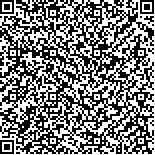郅季炘.有氧运动联合抗阻训练对男性肥胖青少年心血管危险因素的影响[J].中华物理医学与康复杂志,2019,41(6):447-452
扫码阅读全文

|
| 有氧运动联合抗阻训练对男性肥胖青少年心血管危险因素的影响 |
|
| |
| DOI:DOI:10.3760/cma.j.issn.0254-1424.2019.06.013 |
| 中文关键词: 运动 肥胖 青少年 心血管危险因素 内脏脂肪 |
| 英文关键词: Exercise Obesity Adolescents Cardiovascular risk factors Visceral fat |
| 基金项目: |
|
| 摘要点击次数: 6204 |
| 全文下载次数: 6522 |
| 中文摘要: |
| 目的 观察12周有氧运动联合抗阻训练对男性肥胖青少年心血管危险因素的影响。 方法 选取36例男性肥胖青少年(纳入肥胖组)以及36例年龄、性别相匹配的正常体重青少年(纳入对照组)作为研究对象。2组受试者均保持规律饮食习惯,肥胖组在此基础上进行12周有氧运动联合抗阻训练。于实验前、实验进行12周后分别检测2组受试者炎症因子、血脂、胰岛素敏感性、血管内皮功能以及身体成分等指标;并根据实验结束后内脏脂肪含量(VFM)变化值将肥胖组受试者进一步细分为VFM升高组和VFM降低组共2个亚组。 结果 实验前与对照组比较,发现肥胖组血清白细胞介素-1受体拮抗剂(IL-1Ra)、肿瘤坏死因子-α(TNF-α)、瘦素、胰岛素(Ins)和胰岛素抵抗指数(HOMA-IRI)、高敏C-反应蛋白(hs-CRP)及甘油三酯(TG)水平均明显升高(P<0.05),脂联素和高密度脂蛋白胆固醇(HDL-C)均明显降低(P<0.05)。实验后与实验前比较,发现肥胖组受试者体重无显著变化(P>0.05),血清IL-1Ra、干扰素-γ-诱导蛋白10(IP-10)、Ins及HOMA-IRI均明显降低(P<0.05)。亚组分析结果显示,实验后VFM降低组TG及HOMA-IRI下调幅度均较VFM升高组显著,组间差异均具有统计学意义(P<0.05)。 结论 12周有氧运动联合抗阻训练能减轻肥胖男性青少年体内炎症反应及胰岛素抵抗水平;并以运动后VFM减少者其血脂水平及胰岛素敏感性改善幅度较显著。 |
| 英文摘要: |
| Objective To explore the effect of 12 weeks of aerobic exercise combined with resistance training on the cardiovascular risk factors of obese adolescent men. Methods Thirty-six obese male adolescents (the obese group) and 36 age-matched normal-weight adolescent men (the control group) were recruited. Those in both groups maintained their routine eating habits. The obese group participated in a 12-week combined aerobic exercise and resistance training program. Markers of inflammation, blood lipids, insulin sensitivity, vascular endothelium function and body composition were measured before and after the intervention. Results Some in the obese group lost visceral fat mass (VFM) and some gained it. Before the intervention the average levels of serum interleukin-1 receptor antagonist (IL-1Ra), tumor necrosis factor-α, leptin, insulin, insulin resistance index (HOMA-IRI), high-sensitivity C-reactive protein, triglycerides, adiponectin and high-density lipoprotein cholesterol of the obese group were all significantly higher than those of the control group. After the intervention there had been significant decreases in the average levels of IL-1Ra, IFN-γ-inducible protein 10, insulin and HOMA-IRI, but no significant change in average body weight in the obese group as a whole. The group which lost VFM, however, showed greater improvement in triglycerides and insulin resistance than those who gained. Conclusions Twelve weeks of aerobic exercise combined with resistance training can reduce the inflammatory response and insulin resistance of obese adolescent men. The participants who lost more VFM after exercise improved their lipid profile and insulin sensitivity the most. |
|
查看全文
查看/发表评论 下载PDF阅读器 |
| 关闭 |
|
|
|